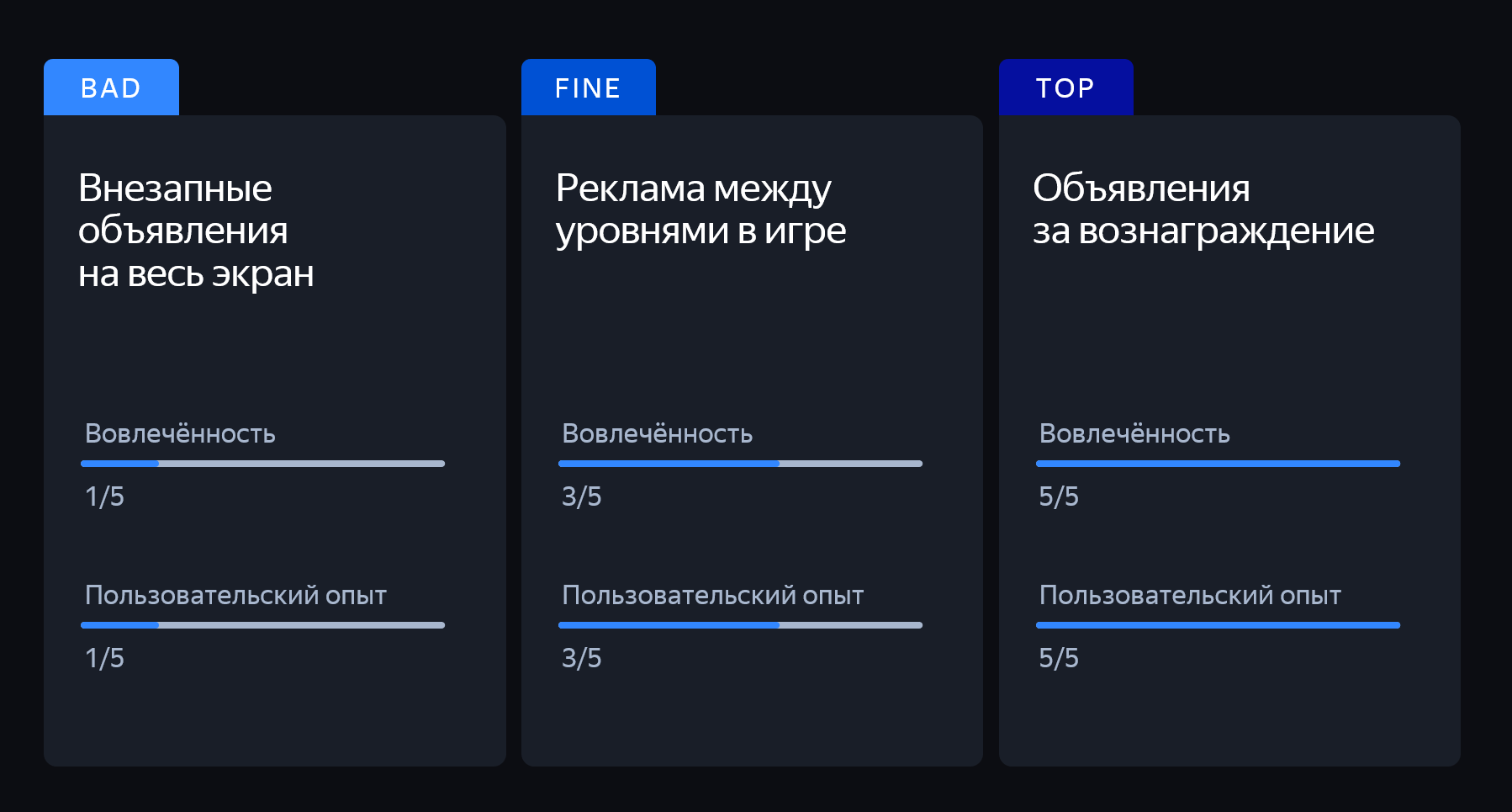Mistakes to Avoid in Ad Monetization of Mobile Games — Tips from Yandex
At the "Gaming Industry" conference, Alexander Vasiliev, a partner relations manager at Yandex's advertising network, delivered a speech. He identified six common mistakes that mobile game developers make during the advertising monetization stage of their apps.
Alexander Vasiliev at the "Gaming Industry" conference
Mistake #1: Using only one advertising network
Many developers believe that just one advertising network is enough since monetization is happening, and everything seems fine. However, Vasiliev considers this approach ineffective. He explains that relying on a single ad network makes app owners dependent on its mood and preferences. Consequently, the ad network can operate in a way that's most convenient for them, as every ad display is linked to them.
Adding more ad networks introduces competition. Networks have to vie for different ad slots, leading to additional optimization and eventually an increase in bids. This contributes to an increase in total revenue.
Yet, it's also unwise to integrate too many ad networks, as the app might not function properly. It's important to find an optimum. When choosing ad networks, Vasiliev recommends considering:
- the geographical location of ad displays;
- the advertiser base;
- ad formats;
- CPM.
Vasiliev also advises using mediation platforms that allow for obtaining and displaying ads from various networks.
Mistake #2: Not updating the SDK
Vasiliev argues that regular SDK updates should not be neglected, even if everything seems to be running smoothly — ads are displaying, users are satisfied, and there are no crashes. The ad displays in the app are just the tip of the iceberg. Ultimately, everything should be set up to ensure advertisers in the network achieve the desired conversions. In Russia, most advertisers work on a CPA (cost per action) basis, seeking app installations, website visits, product or service purchases, or other specific actions. The advertising network aims to ensure conversions occur, which is why every new SDK version works on new conversion improvement methods. Increased conversions on sites eventually result in higher bids.
Additionally, SDK updates fix errors, improve software reliability, and add new useful tools. If necessary, they also ensure compliance with new App Store and Google Play policies and guidelines.
Mistake #3: Not caching ads
Occasionally, app owners encounter situations where their games show a black screen with a loading circle instead of an ad. Vasiliev points out that in such cases, most users simply close the app and switch to another game. The result is a decrease in ad revenue. Sometimes players are willing to wait, but their interest and loyalty to the project wane.
The solution is to maintain a reserve of creative assets for the entire lifecycle of a gaming session, ensuring there's something to show during ad slots. To determine the optimal number of creative assets, track the Show Rate metric (the ratio of ad displays to ad requests). For example, if you have a hundred creative assets but the user exits the game after seeing only two, the Show Rate is 2%. This is very low. A reasonably good level is considered 20% Show Rate. If it's lower, you need to revisit your caching algorithms. Achieving 100% is nearly impossible, says Vasiliev.
Mistake #4: Blocking too many ad topics
Another mistake, according to Vasiliev, is choosing to display only advertisements whose topics directly intersect with the game's theme. For instance, showing solely car-related ads in racing games. It's important to understand that users' interests are much broader.
Showing every possible ad is also not advisable. At the very least, block ads from direct competitors. Additionally, do not display adult content in kids' games.
Mistake #5: Using inappropriate ad formats
The main ad formats in games are banners, full-screen ads, and rewarded ads. When using them, it's important to carefully plan the initiation methods, Vasiliev advises. This affects user engagement and loyalty, which in turn influences monetization. For example, if ads interrupt gameplay too frequently, users might get annoyed and uninstall the app. Avoid placing ads on registration, thank you, or error pages, or over interfaces or control elements.
Vasiliev suggests that good places for ads are pages where players spend more than three seconds. Finding such places can be done with tools like AppMetrica or Firebase.
When choosing ad formats, Vasiliev advises considering the app's theme and user behavior. Suitable formats can be determined through A/B testing.
Mistake #6: Not using app-ads.txt
app-ads.txt is a certificate in which app owners specify the list of authorized ad networks and sellers. Its use is an industry standard. If ignored, some advertisers might refuse to collaborate.
It’s important to remember to update the file to maintain connections with additional advertisers that the ad network can bring to the app.




